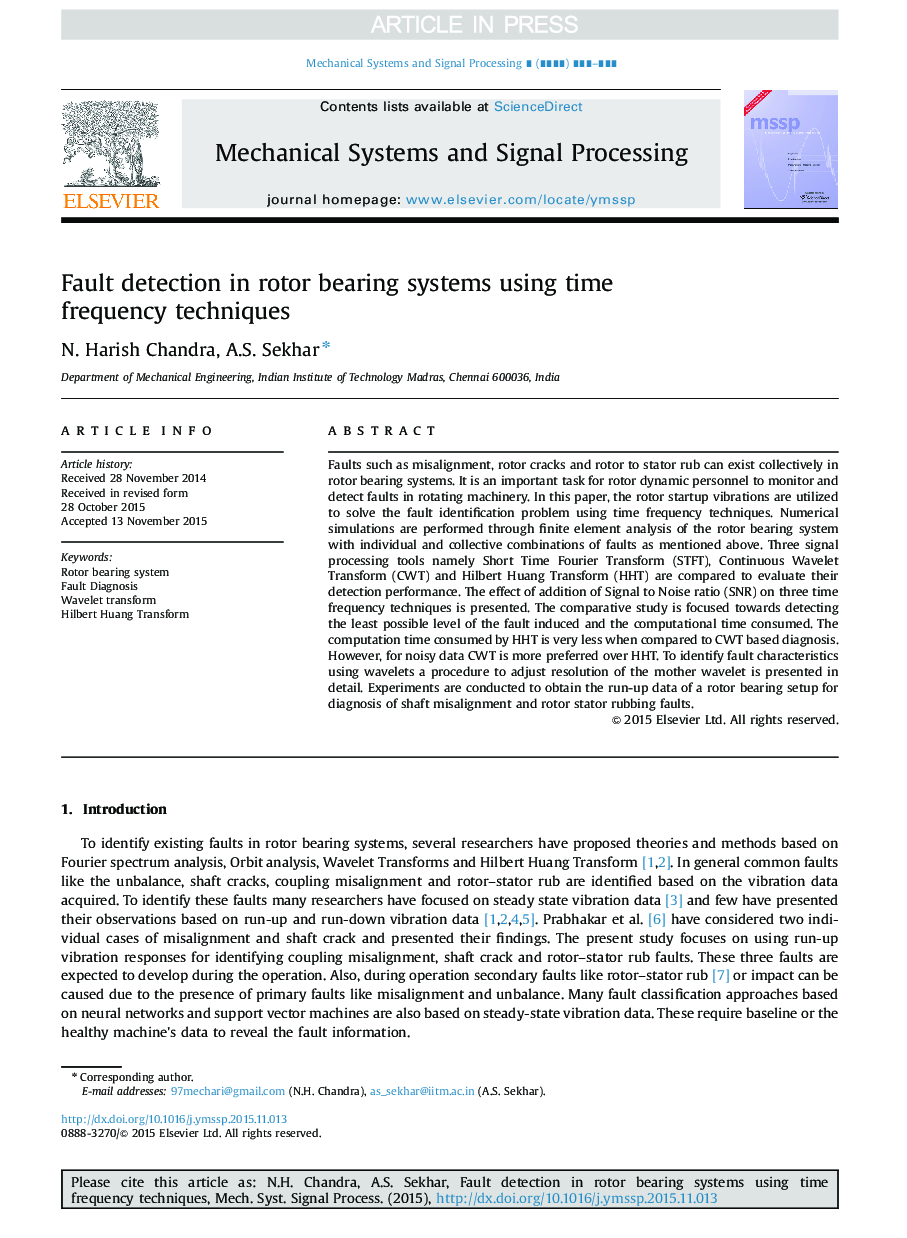| Article ID | Journal | Published Year | Pages | File Type |
|---|---|---|---|---|
| 6955336 | Mechanical Systems and Signal Processing | 2016 | 29 Pages |
Abstract
Faults such as misalignment, rotor cracks and rotor to stator rub can exist collectively in rotor bearing systems. It is an important task for rotor dynamic personnel to monitor and detect faults in rotating machinery. In this paper, the rotor startup vibrations are utilized to solve the fault identification problem using time frequency techniques. Numerical simulations are performed through finite element analysis of the rotor bearing system with individual and collective combinations of faults as mentioned above. Three signal processing tools namely Short Time Fourier Transform (STFT), Continuous Wavelet Transform (CWT) and Hilbert Huang Transform (HHT) are compared to evaluate their detection performance. The effect of addition of Signal to Noise ratio (SNR) on three time frequency techniques is presented. The comparative study is focused towards detecting the least possible level of the fault induced and the computational time consumed. The computation time consumed by HHT is very less when compared to CWT based diagnosis. However, for noisy data CWT is more preferred over HHT. To identify fault characteristics using wavelets a procedure to adjust resolution of the mother wavelet is presented in detail. Experiments are conducted to obtain the run-up data of a rotor bearing setup for diagnosis of shaft misalignment and rotor stator rubbing faults.
Related Topics
Physical Sciences and Engineering
Computer Science
Signal Processing
Authors
N. Harish Chandra, A.S. Sekhar,
